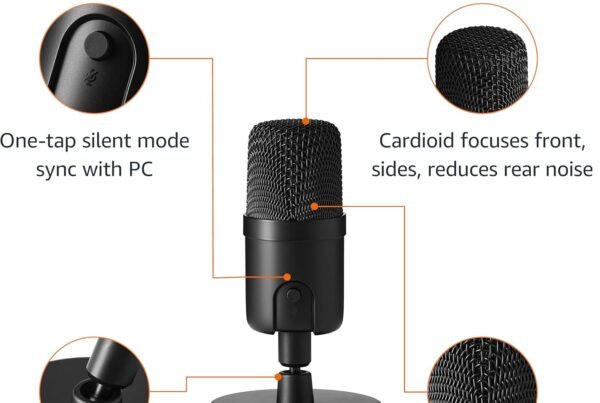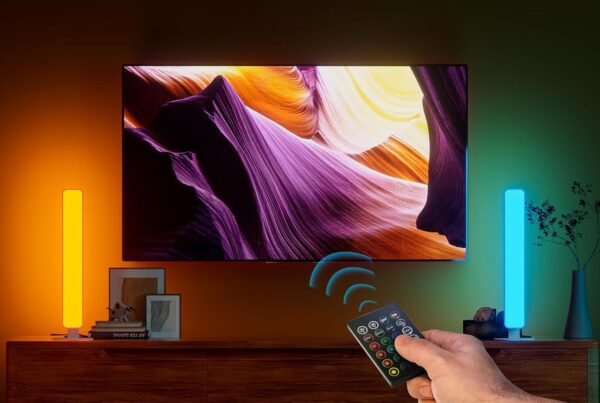The world of mobile graphics is always changing. Now, Intel’s Arc A550M and NVIDIA’s RTX 3050 6GB Mobile are at the center of attention for laptop gamers. But, which one is better for real-world gaming? Let’s explore and find out who wins this exciting competition.
Contents
- 1 Overview of the GPU Market Competition
- 2 Technical Specifications and Architecture Comparison
- 3 Memory Configuration and Bandwidth Analysis
- 4 Power Efficiency and Thermal Performance
- 5 intel arc a550m vs rtx 3050 Gaming Benchmarks
- 6 Ray Tracing and Advanced Features
- 7 Driver Support and Software Ecosystem
- 8 Value Proposition and Price-Performance Ratio
- 9 Conclusion
- 10 FAQ
- 10.1 What are the key differences between the Intel Arc A550M and NVIDIA RTX 3050 laptop GPUs?
- 10.2 How do the core specifications of the Arc A550M and RTX 3050 compare?
- 10.3 What are the memory configurations and bandwidth capabilities of these GPUs?
- 10.4 How do the Arc A550M and RTX 3050 compare in terms of power efficiency and thermal performance?
- 10.5 How do the Arc A550M and RTX 3050 perform in gaming benchmarks?
- 10.6 What advanced features do these GPUs support?
- 10.7 How do the driver support and software ecosystem differ between Intel Arc and NVIDIA GPUs?
- 10.8 Which GPU offers the better value proposition and price-to-performance ratio?
Key Takeaways
- RTX 3050 6GB Mobile outperforms Arc A550M by a slim 2.5% margin in aggregate benchmark scores.
- In popular games, RTX 3050 6GB Mobile delivers 3% faster frame rates than Arc A550M at both 1080p and 1440p resolutions.
- Arc A550M utilizes a more advanced 6nm chip lithography compared to the RTX 3050 6GB Mobile’s 8nm process.
- RTX 3050 6GB Mobile features a higher performance-per-watt efficiency than Arc A550M.
- Arc A550M offers a 100% higher maximum VRAM capacity of 8GB compared to the RTX 3050 6GB Mobile’s 6GB.
Overview of the GPU Market Competition
The laptop GPU market is a fierce battle between Intel and NVIDIA. Intel’s Arc Alchemist series has entered the fray, challenging NVIDIA’s GeForce dominance. The Arc A550M and RTX 3050 are key players, aiming at budget gamers with good performance.
Intel’s Arc Alchemist, including the A550M, offers a strong challenge to NVIDIA. The A550M has 8 Xe Cores, 8 ray tracing units, and a 1550 MHz clock. It also has 4 GB of GDDR6 memory. In tests, it matches or beats the RTX 3050 in some areas.
NVIDIA’s RTX 3050 is still a favorite for budget laptops. It uses Ampere architecture and supports ray tracing. This makes it great for older games and less demanding titles. The rivalry between these GPUs is pushing the limits of mobile graphics.
| Specification | Intel Arc A550M | NVIDIA GeForce RTX 3050 |
|---|---|---|
| GPU Cores | 1024 ALUs | 2048 CUDA Cores |
| Ray Tracing Units | 8 | 20 |
| Graphics Clock Speed | 1550 MHz | 1550 MHz |
| Memory | 8 GB GDDR6 | 6 GB GDDR6 |
| Memory Interface | 64-bit | 128-bit |
| TDP Range | 35-50W | 35-80W |
The fight between Intel’s Arc Alchemist and NVIDIA’s GeForce RTX series is making GPUs better and cheaper. As this competition grows, we’ll see more powerful and affordable options in the intel arc alchemist, nvidia geforce rtx 3050, and entry-level gpus markets.

Technical Specifications and Architecture Comparison
Let’s look at the key specs of the Intel Arc A550M and the NVIDIA RTX 3050. We’ll focus on their graphics power and design differences.
Core Specifications
The Intel Arc A550M has 2,048 pipelines/CUDA cores. It runs at a base clock of 900 MHz and boosts to 2,050 MHz. Made on a 6nm process, it has 21,700 million transistors.
The RTX 3050 6GB Mobile has 2,560 CUDA cores. It starts at 1,237 MHz and goes up to 1,492 MHz. It’s built on an 8nm process.
The Arc A550M has 256 Tensor Cores and 16 Ray Tracing Cores. The RTX 3050’s specialized cores are not detailed here.
| Specification | Intel Arc A550M | NVIDIA RTX 3050 |
|---|---|---|
| Cores/CUDA Cores | 2,048 | 2,560 |
| Base Clock (MHz) | 900 | 1,237 |
| Boost Clock (MHz) | 2,050 | 1,492 |
| Process Node | 6nm | 8nm |
| Transistors (million) | 21,700 | 12,000 |
| Tensor Cores | 256 | N/A |
| Ray Tracing Cores | 16 | N/A |
These specs give us a first look at the gpu specs analysis and graphics processing power of these GPUs. They prepare us for a deeper look at their performance and features.

Memory Configuration and Bandwidth Analysis
The Intel Arc A550M and NVIDIA RTX 3050 Mobile GPUs have different memory setups. The Arc A550M has 8GB of GDDR6 memory on a 128-bit memory bus. This gives it a memory bandwidth of 224.0 GB/s, making it great for tasks that need lots of memory.
The RTX 3050 Mobile has 6GB of GDDR6 memory but on a 96-bit memory bus. This means it has a memory bandwidth of 192.0 GB/s. This could slow it down in tasks that need fast data transfer.
| Specification | Intel Arc A550M | NVIDIA RTX 3050 Mobile |
|---|---|---|
| VRAM Capacity | 8GB | 6GB |
| Memory Type | GDDR6 | GDDR6 |
| Memory Bus Width | 128-bit | 96-bit |
| Memory Bandwidth | 224.0 GB/s | 192.0 GB/s |
The Arc A550M’s more vram capacity and memory bandwidth are big pluses for tasks like high-resolution gaming and video editing. Both GPUs use GDDR6 memory, but the Arc A550M might have a slight advantage in some tasks.
Power Efficiency and Thermal Performance
The GPU market is changing fast, with power efficiency and thermal performance being key. The Intel Arc A550M and the NVIDIA RTX 3050 6GB Mobile are both important. They both have a thermal design power (TDP) of 60 watts, showing they need similar power.
Power Consumption Metrics
The Intel Arc A550M has a power efficiency rating of 28.01. The RTX 3050 6GB Mobile scores slightly higher at 28.71. This small difference is due to the Arc A550M’s 6nm process, which is more efficient than the RTX 3050’s 8nm process.
Looking at thermal performance, both GPUs are crucial for gamers and enthusiasts. The Arc A550M’s design might offer a more stable gaming experience.
“The battle for power efficiency and thermal performance has become a crucial factor in determining the superiority of modern graphics solutions.”
As the GPU market keeps changing, the thermal performance and power consumption of these GPUs matter a lot. They will influence what tech-savvy consumers and PC enthusiasts choose.
intel arc a550m vs rtx 3050 Gaming Benchmarks
The fight between the Intel Arc A550M and the NVIDIA RTX 3050 is exciting. We’ve looked at fps performance, gaming benchmarks, and laptop gpu benchmarks. This helps us see how well these GPUs perform.
In 1080p games, the RTX 3050 6GB Mobile is a bit ahead, with 72 FPS on average. The Intel Arc A550M scores 70-75 FPS. But, at 1440p, the gap gets smaller. The RTX 3050 averages 36 FPS, and the Arc A550M scores 35-40 FPS.
Games show different results. For example, the Arc A550M is 5% faster in Shadow of the Tomb Raider at 1080p Ultra. But, the RTX 3050 is 108% faster in Cyberpunk 2077 at 1080p Low.
| GPU | Pixel Rate (GPixel/s) | Texture Rate (GTexel/s) | TDP (Watts) | Boost Clock (MHz) | Transistors (million) |
|---|---|---|---|---|---|
| Intel Arc A550M | 131.2 | 262.4 | 60 | 2050 | 21700 |
| NVIDIA RTX 3050 | 59.04 | 147.6 | 130 | 1845 | 12000 |
The Intel Arc A550M has some big advantages. It has a 72.16 GPixel/s higher pixel rate and 114.8 GTexels/s higher texture rate. It also uses 70W less power and has 9,700 million more transistors.
Even though the RTX 3050 has a 652 MHz faster clock speed and 1.05 TFLOPS more floating-point performance, the Arc A550M’s design and power efficiency make it a strong competitor. It offers great gaming benchmarks performance.
“The Intel Arc A550M and NVIDIA RTX 3050 are both great choices for laptop gamers. Each has its own strengths and weaknesses. Your choice will depend on your gaming preferences and the games you play.”
Looking at the laptop gpu benchmarks and comparing the architectures helps you decide. This way, you can choose the best GPU for your gaming needs.
Ray Tracing and Advanced Features
The Intel Arc A550M and NVIDIA RTX 3050 graphics cards both use the latest DirectX 12 Ultimate (12_2) and Shader Model 6.6. But, they have different ray tracing abilities. The Arc A550M has 16 dedicated Ray Tracing Cores. The RTX 3050’s exact number of RT cores is not shared.
The Arc A550M supports Vulkan 1.3 API, while the RTX 3050 uses Vulkan 1.2. The RTX 3050 has NVIDIA’s DLSS (Deep Learning Super Sampling) for better visuals and performance. Intel’s XeSS (Xe Super Sampling) on the Arc A550M offers a similar AI-powered upscaling.
Modern Gaming Technologies
Both GPUs come with advanced features for a better gaming experience. They support:
- Hardware-accelerated ray tracing
- Variable-rate shading
- Mesh shading
- Sampler feedback
The Arc A550M also supports AV1 hardware-accelerated encoding and decoding. This makes it up to 50x faster than traditional software for video content.
| Feature | Intel Arc A550M | NVIDIA RTX 3050 |
|---|---|---|
| Ray Tracing Cores | 16 | Not Specified |
| Vulkan API Support | Vulkan 1.3 | Vulkan 1.2 |
| AI-Powered Upscaling | XeSS | DLSS |
| AV1 Hardware Acceleration | Supported | Not Supported |
Both the Intel Arc A550M and NVIDIA RTX 3050 aim to offer an immersive gaming experience. They have advanced features and ray tracing capabilities to enhance gaming.
Driver Support and Software Ecosystem
The battle for driver support and software ecosystem dominance is heating up with Intel’s Arc series. NVIDIA has a strong driver support system and a wide software ecosystem. This includes the GeForce Experience suite. Intel’s Arc series is new, but the company is working hard to catch up.
NVIDIA’s ecosystem is more mature, offering a stable and feature-rich experience. It has many optimization tools and game-ready drivers. Intel’s Arc drivers are improving fast, showing Intel’s commitment to a strong software experience.
| Feature | NVIDIA GeForce | Intel Arc |
|---|---|---|
| Driver Support | Mature and well-established | Improving, with regular updates |
| Software Ecosystem | Extensive, including GeForce Experience | Developing, with focus on compatibility and optimization |
| Performance Optimization | Optimized for gaming and content creation | Emphasizing synthetic benchmarks, with room for improvement in real-world gaming |
| Advanced Features | Raytracing, DLSS, and other cutting-edge technologies | Introducing new features like XeSS, XeGTAO, and hardware-accelerated raytracing |
It will be interesting to see how Intel’s Arc GPUs compare to NVIDIA’s dominance. The gpu driver support and software ecosystem for Intel’s Arc are evolving. This could change the game in the market.
Value Proposition and Price-Performance Ratio
The Intel Arc A550M and NVIDIA RTX 3050 6GB Mobile GPUs are big in the laptop market. Their value and how much you get for your money are key. The RTX 3050 has a 2.5% edge in performance, but price and how well they fit in laptops matter most.
The Arc A550M has 8GB VRAM, which might attract gamers and creators. They need more memory for the future. On the other hand, the RTX 3050’s better performance and strong NVIDIA support might sway those who prefer a tried-and-true option.
Market Analysis
Laptops with the Arc A550M and RTX 3050 6GB cost about the same. The Acer Nitro 5 AN515-58-525P and MSI GF63 Thin have good specs. The HP Victus, with an AMD Ryzen 5 and NVIDIA RTX 2050, is a cheaper option.
The GPU pricing, price-to-performance ratio, and GPU value proposition are vital for these GPUs’ success. Buyers will consider performance, features, and price when choosing.
Conclusion
The Intel Arc A550M and NVIDIA RTX 3050 6GB Mobile are neck and neck in the mid-range laptop GPU market. The RTX 3050 has a slight lead in overall performance. It has a higher benchmark range and better 3D speed.
However, the Arc A550M has more VRAM and a slight edge in peak lighting effects. This shows a close competition between the two.
In gaming, the RTX 3050 is faster in complex splatting and texture detail. But the Arc A550M has a more balanced performance. Its gaming scores range from 42% to 72%.
The choice between these GPUs depends on the laptop’s configuration, price, and user preferences. Both the Intel Arc A550M and NVIDIA RTX 3050 are good for 1080p gaming in laptops.
The laptop gpu comparison, graphics card showdown, and mobile gpu shootout highlight the mid-range GPU market’s competition. Laptop buyers have a great choice between these options.









